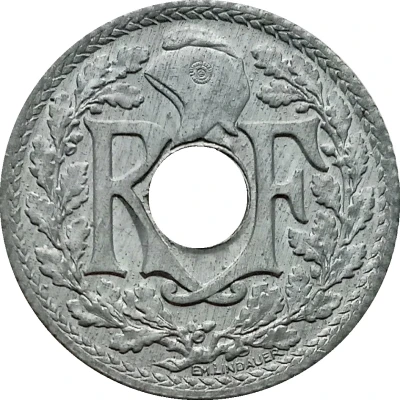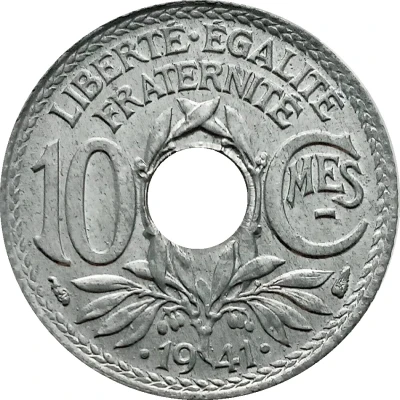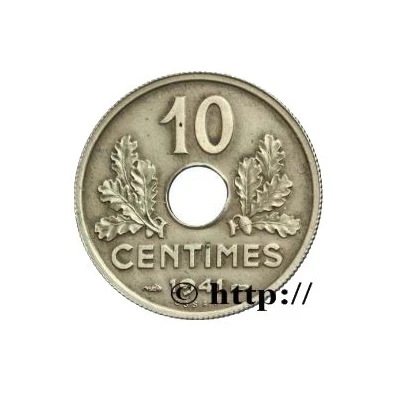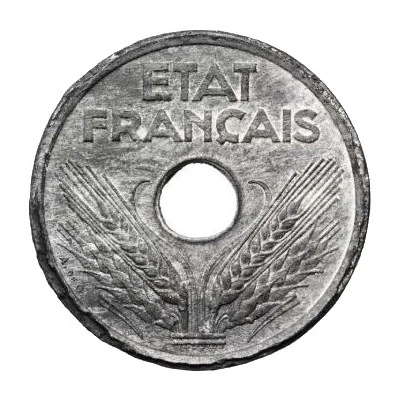
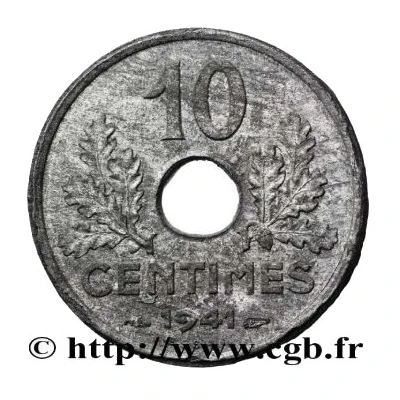

© CGB
10 centimes Etat français essai-piéfort au grand module
1941 year| Zinc | 5.14 g | 21 mm |
| Issuer | France |
|---|---|
| Period | French State (1940-1944) |
| Type | Pattern |
| Year | 1941 |
| Value | 10 Centimes (0.10) |
| Currency | Franc (1795-1959) |
| Composition | Zinc |
| Weight | 5.14 g |
| Diameter | 21 mm |
| Shape | Round with a round hole |
| Technique | Milled |
| Orientation | Medal alignment ↑↑ |
| Demonetized | Yes |
| Updated | 2024-10-04 |
| Numista | N#178641 |
|---|---|
| Rarity index | 60% |
Reverse
10
CENTS
1941
ESSAY
Between two oak branches each bearing an acorn and four leaves; a central hole bordered by a scroll.
Script: Latin
Lettering:
10
CENTIMES
1941
ESSAI
Engraver: Atelier de gravure
Edge
Plain
Comment
Double the normal weight of the coin and in medal rather than coinage.In smooth edge rather than in finely striated edge of the other specimens.
It is necessary to underline that it is not a simple piéfort but a test piéfort.
This means that it was used for the production of the 10 centimes.
Interesting fact
This coin was designed by the French sculptor and engraver, Auguste C. Pétel, who was known for his work on various French coins and medals during the early 20th century. The obverse of the coin features a portrait of a young woman representing the French Republic, while the reverse depicts a stylized image of a wheat sheaf, symbolizing prosperity and abundance. The coin's design was meant to reflect the themes of liberty, equality, and fraternity, which were core values of the French Republic.
